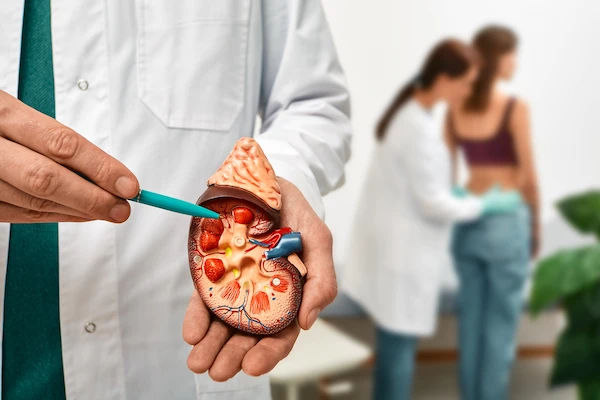Purpura Overview: Causes, Treatment, and Symptoms
Learn about purpura, a condition causing purple spots on the skin. Discover its causes, associated symptoms, and effective treatment options for managing this condition.

Written by Dr. Rohinipriyanka Pondugula
Reviewed by Dr. J T Hema Pratima MBBS
Last updated on 25th Aug, 2025

Purpura is a condition that causes purple or red spots on the skin due to small blood vessels leaking under the skin. These spots can look like bruises but are not caused by injury. While purpura itself is not a disease, it can be a sign of an underlying health issue. This article will help you understand what purpura is, its causes, symptoms, and how it can be managed.
What is Purpura?
Purpura refers to small, flat, purple or red spots that appear when tiny blood vessels (capillaries) leak blood into the skin. Unlike bruises, purpura spots do not fade when pressed. They can vary in size—smaller spots are called petechiae, while larger ones are called ecchymoses.
Purpura can occur in people of all ages, including children (especially in conditions like HenochSchönlein purpura) and older adults (often due to senile purpura).
Common Causes of Purpura
Purpura can be caused by different factors, including:
1. Low Platelet Count (Thrombocytopenia)
Platelets help blood clot. If their count drops, bleeding under the skin can occur. Causes include:
- Immune thrombocytopenia (ITP) – The immune system mistakenly attacks platelets.
- Leukemia or other blood disorders – Affects platelet production.
- Medications – Some drugs (like blood thinners) reduce platelet function.
2. Blood Vessel Weakness (Vasculitis or Fragility)
- Senile purpura – Common in older adults due to thinning skin and fragile blood vessels.
- HenochSchönlein purpura (HSP) – An immune reaction causing inflammation in small blood vessels, often in children.
- Infections – Viral or bacterial infections (like dengue or meningitis) can damage blood vessels.
3. Other Causes
- Vitamin deficiencies – Lack of vitamin C (scurvy) or vitamin K can cause bleeding.
- Autoimmune diseases – Lupus or rheumatoid arthritis may trigger purpura.
- Liver or kidney disease – Can affect blood clotting.
Symptoms of Purpura
The main symptom is purple or red spots that do not turn white when pressed. Other signs may include:
- Easy bruising
- Bleeding gums or nosebleeds (if platelet count is low)
- Joint pain or swelling (in HSP)
- Fatigue or weakness (if anemia is present)
- Fever (if due to infection)
If purpura appears suddenly with other symptoms like severe headache, dizziness, or heavy bleeding, seek medical help immediately.
How is Purpura Diagnosed?
A doctor may perform:
- Physical examination – Checking the spots and other symptoms.
- Blood tests – To check platelet count, clotting factors, and infections.
- Biopsy – In rare cases, a small skin sample may be tested.
- Urine tests – If kidney involvement is suspected (like in HSP).
Consult a Dermatologist for best advice
Treatment Options for Purpura
Treatment depends on the underlying cause:
1. For Low Platelets (Thrombocytopenia)
- Steroids or immune therapy – If the immune system is attacking platelets.
- Platelet transfusions – In severe cases.
- Avoiding bloodthinning medications – Like aspirin or ibuprofen.
2. For Blood Vessel Inflammation (Vasculitis)
- Antiinflammatory medications – Such as corticosteroids.
- Pain relief – For joint pain in HSP.
3. For Senile Purpura (Age-Related)
- Protecting skin from injury – Using gentle skincare.
- Vitamin supplements – If deficiencies are detected.
4. Lifestyle and Home Care Tips
- Eat a balanced diet – Include vitamin C (citrus fruits, bell peppers) and vitamin K (leafy greens).
- Avoid excessive sun exposure – Can weaken blood vessels.
- Use soft-bristled toothbrushes – To prevent gum bleeding.
- Wear protective clothing – To prevent bruises.
When to See a Doctor?
Consult a doctor if:
- Spots appear suddenly without reason.
- You have frequent nosebleeds or heavy periods.
- You feel unusually tired or dizzy.
- There is swelling or pain in joints.
If you notice these symptoms, you can book a consultation with a specialist on Apollo 24|7 for proper diagnosis and treatment.
Final Thoughts
Purpura is usually harmless but can sometimes indicate a serious condition. Early diagnosis helps in effective treatment. If you or a loved one has unexplained purple spots, don’t ignore them—seek medical advice.
Would you like to schedule a blood test or doctor consultation? Visit Apollo 24|7 for expert care from the comfort of your home.
Stay informed, stay healthy!
Consult Top Specialists
Consult a Dermatologist for best advice
Dr. Kavitha Killaparthy
Dermatologist
23 Years • MBBS,DIPLOMA(DERMATOLOGY,VENEREOLOGY,LEPROSY)
Hyderabad
JDS Skin & Hair Clinic, Hyderabad
Dr. Mayuri Jain
Dermatologist
11 Years • MBBS, MD Dermatology , Venereology & Leprosy
Delhi
Dr Mayuri Jain Clinic, Delhi

Dr Ekansh Shekhar
Dermatologist
10 Years • MBBS MD
Lucknow
Apollo Clinic Hazratganj, Lucknow
Dr.j Girishma
Dermatologist
6 Years • MBBS MD DERMATOLOGY
Bengaluru
Apollo Medical Center, Marathahalli, Bengaluru
Dr. Sudheer Kumar S
Dermatologist
7 Years • MBBS, MD (DVL)
Tirupati
Nil, Tirupati
Consult Top Specialists
Dr. Kavitha Killaparthy
Dermatologist
23 Years • MBBS,DIPLOMA(DERMATOLOGY,VENEREOLOGY,LEPROSY)
Hyderabad
JDS Skin & Hair Clinic, Hyderabad
Dr. Mayuri Jain
Dermatologist
11 Years • MBBS, MD Dermatology , Venereology & Leprosy
Delhi
Dr Mayuri Jain Clinic, Delhi

Dr Ekansh Shekhar
Dermatologist
10 Years • MBBS MD
Lucknow
Apollo Clinic Hazratganj, Lucknow
Dr.j Girishma
Dermatologist
6 Years • MBBS MD DERMATOLOGY
Bengaluru
Apollo Medical Center, Marathahalli, Bengaluru
Dr. Sudheer Kumar S
Dermatologist
7 Years • MBBS, MD (DVL)
Tirupati
Nil, Tirupati




